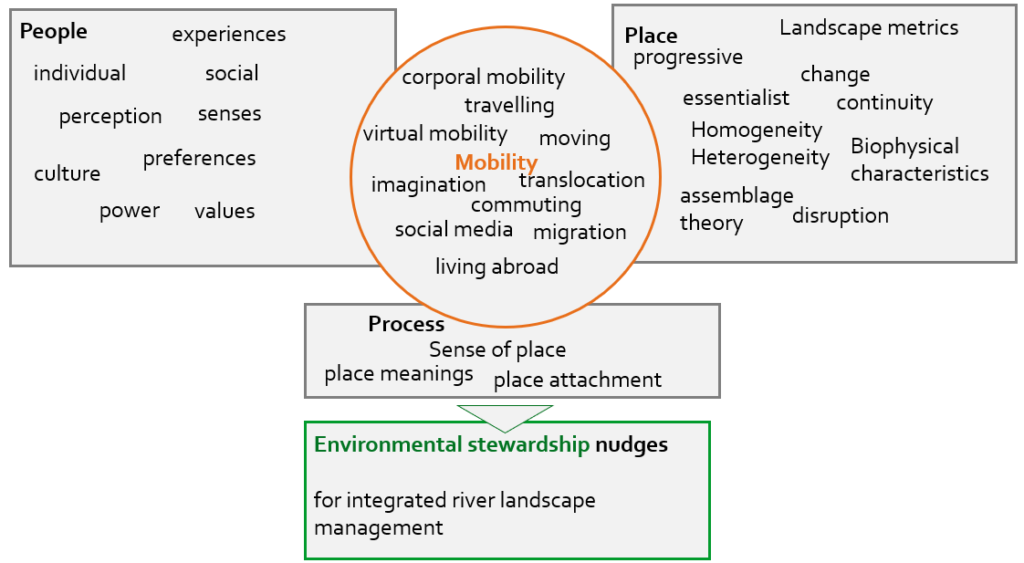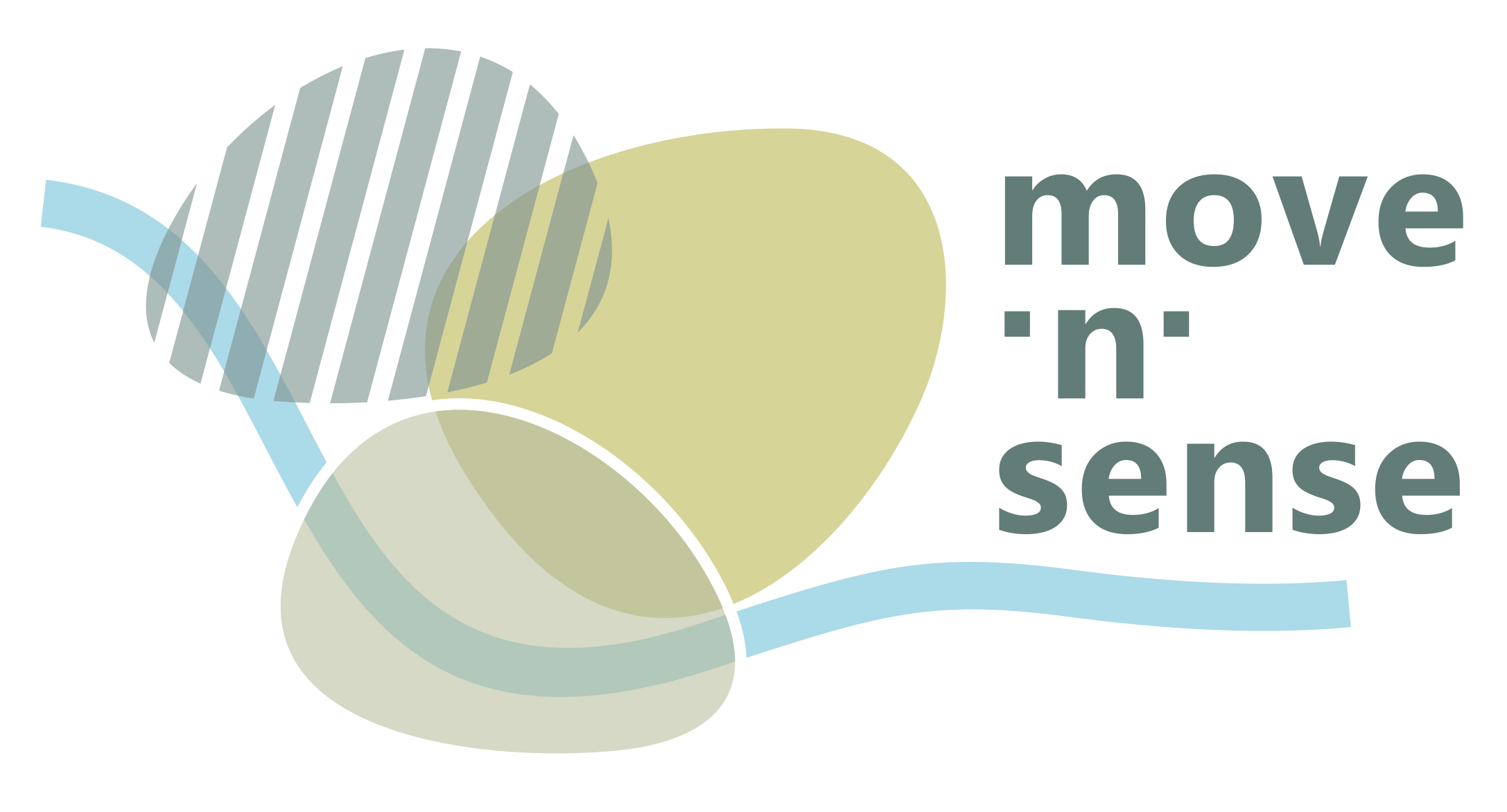f

Rivers are social-ecological systems that offer various benefits for people’s livelihoods (Vermaat et al., 2015), yet often they create natural and administrative boundaries (Wang et al, 2020), especially in national border contexts. Despite the need and requirements for cross-border cooperation for sustainable river development (European Commission, 2003), formal landscape planning instruments are limited within the national border. In contrast, and specifically within the European Union, borders do not represent a limit for people’s mobility, instead people are constantly on the move (Cresswell, 2011; Hannam et al., 2006). Cross border regions, such as the Odra river region dividing Poland and Germany, offer a special case for investigating the relation between different types of mobility and sense of place as well as the potential for environmental stewardship. While open borders allow cross-border activities, the historic burden and socio-economic differences still create a division between both sites of the border (Sternberg, 2017), provoking very specific mobility patterns (Gialis, 2011; Lin and Tse, 2005a). Simultaneously, the rapid advance of Internet of Things supports new forms of corporal as well as virtual travel (Atzori et al., 2010; Büscher and Urry, 2009). These trends in people’s mobility call for new governance approaches in sustainable river management, where people can act as environmental stewards overcoming administrative boundaries. Environmental stewardship has shown to be closely linked to sense of place, i.e. the meanings and attachments people attribute to a place (Stedman, 2016a; Tuan, 1977). Concurrently, mobility provokes that people are confronted with new places, which forces a rethink of how we understand sense of place. In contrast to essentialist perspectives of sense of place, which are related to assumptions of sedentarism, the more progressive understanding accounts for a dynamic lifestyle, assuming mobility as the natural human condition (Di Masso et al. 2019). However, empirical studies are still scarce, that (1) consider people’s everyday life environments, (2) view both approaches (essentialist and progressive) as complementary, and (3) account for the different types of mobility, such as physical or digital.
Therefore, this project aims at exploring the influence of mobility on sense of place and in consequence environmental stewardship in the context of cross-border regions, because people in contrast to national planning instruments can transcend borders and thus support sustainable river management. The objectives of this study are to: a) Explore mobility patterns in the border region; b) Elicit citizens’ directly perceived and socially and culturally constructed sense of place in natural and semi-natural landscapes accounting for essentialist and progressive perspectives; c) Evoke the influence of mobility patterns on senses of place and environmental stewardship; and finally d) Develop environmental stewardship nudges for integrated river landscape management. A conceptual framework will be developed that seeks to connect mobility and sense of place and in consequence environmental stewardship through systematic literature review. It will guide the empirical work of the project and be iteratively amended based on the results. Mobility patterns will be explored using semi-structured interviews with experts and local citizens. Simultaneously, an online participatory mapping survey (PPGIS) assess sense of place, through an indicator, which allows respondents to report on their place meanings and attachment within their everyday life settings (Gottwald and Stedman, 2020)*, upload photographs for their meaningful places, report on their environmental stewardship behaviour, as well as their mobility pattern. Finally, quantitative results will be enhanced using a spatial navigational method (GPS tracking followed by interviews), which provides insights on the connection between mobility and sense of place (Bell et al., 2015). Our research will advance new methods for operationalizing a more fluid understanding of sense of place and comparing and integrating with more fixed understandings of sense of place. We will draw upon our empirical insights to demonstrate how both essentialist and progressive understandings of place may lead to enhanced understanding of people-place relations in a cross-border context. Continuity, which is an indicator for an essentialist character, will be assessed through interviews, PPGIS survey questions, as well as the spatial navigational method. Furthermore, physical homogeneity (essentialist) vs. heterogeneity (progressive) characteristics of place will be assessed through photograph and landscape analysis, based on the PPGIS survey and spatial navigational method. Meanwhile social homogeneity and heterogeneity are revealed through interviews and PPGIS survey questions.
